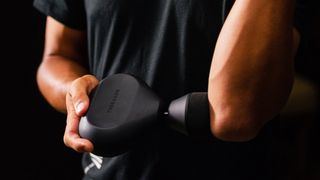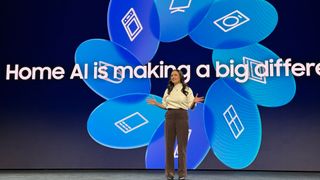Anyone who’s been following the news from CES 2025 will know that one word (or two letters if we’re being pedantic) dominated the conversation at the year’s biggest tech conference: AI. Artificial intelligence is being shoehorned into everything, from cars to coffee machines – often whether we like it or not.
Even if it’s an area of our lives where artificial intelligence doesn’t feel like a natural fit, tech companies are dead keen on inserting it to better ‘personalize our experiences’ (or make good use of all the data that’s been harvested over the past decade).
That goes double for fitness kit. CES 2025 showcased a lot of AI-powered fitness tools that are set to invade our homes and gyms in 2025 and beyond. The Amazfit Active 2, which we’ll be reviewing for our best cheap smartwatch buying guide, will arrive with voice-activated AI assistant functionality.
The beautiful amp fitness machine and the Gym Monster 2 are home gym setups that use AI to monitor your training and recommend workouts via the kit. Similarly, Therabody, makers of some of the best massage guns, will use data from the best Garmin watches to recommend recovery programs.

This follows emerging trends in fitness and doesn’t exactly reinvent the wheel. Oura Ring 4 has an Oura Advisor chatbot service in Beta. It’s trained on Oura users’ data and can answer basic health and fitness questions or recommend courses of action based on your individual data. PUSH, one of the best fitness apps for strength training, can program workouts for you, as can a slew of others. However, recent data suggests remote personal trainers won’t be replaced any time soon.
Garmin, COROS and other manufacturers of the best running watches were doing this a long time ago. They didn’t call it AI, just utilizing their algorithms to recommend workouts based on your training plan and recovery scores. So CES 2025’s AI offerings are giving us nothing new, even if companies now use LLMs or Generative AI instead of algorithmic flowchart-style decision-making to achieve the same effect.
Therabody, amp, Amazfit and the rest have just expanded these old functionalities to new devices and services. No one, as far as I can see, is doing anything different or revolutionary in fitness this year. Is this the AI revolution we were waiting for?

Part of it, I believe, is that unlike computing, content creation, and communication, there’s a limit to what AI can do in a predominantly physical space. You can instead consult a real-life personal trainer, they can write you a program in Microsoft Word, and you can print it off and take it to the gym.
What AI can do is recommend changes to that program and provide expert advice on new exercises – but, as my colleague Stephen Warwick and I found out, using AI to design your workouts is not a perfect process yet. It needs to be combined with a bit of common sense – if you’re feeling ill, tired or sore, dial the training back a bit, and perhaps ask a member of the gym staff for some guidance on new or unfamiliar exercise.
I’m not saying there’s categorically no place for AI in consumer health and fitness devices, of course; people do find it very useful, to say nothing of the applications already prevalent in the healthcare industry. However, I was expecting some more imaginative AI use cases from CES, and as the conference drew to a close, I was left disappointed.
You might also like…
Services Marketplace – Listings, Bookings & Reviews
